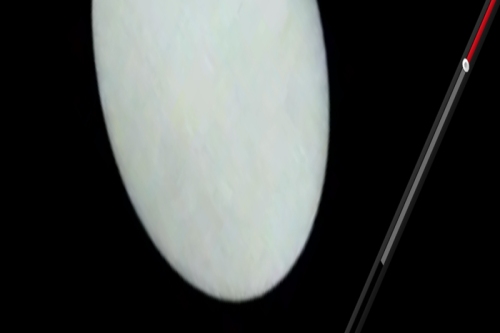Bishop calls out asking where are all the artists engaging with our increasingly digital existence? “While many artists use digital technology, how many really confront the questions of what it means to think, see, and filter affect through digital?’ Bishop highlights some artists that she feels deal with the digital condition and its consumption of the modern age (Hirschhorn’s Touching Reality 2012 and Trecartin’s K Corea INC.K) It is here that Bishop defines her subjects for this article – acknowledging the engagement new media artist have made towards critiquing the digital condition but wanting to focus specifically on the mainstream art world ‘commercial galleries, the Turner Prize and Biennales’ . This is where the article has caused some critical discourse from different artistic arenas. The comments page over at the artforum website is full of disgruntled media art organisations arguing that the institutions (that Bishop belongs to) create the divide between contemporary art and digital media. The very fact that Bishop is raising these questions in Artforum (within the instutionalised arena she is concerned with) is positive. Some tone in the responses echo the disenfranchised voice of the marginalised sub genre, irritated at your favourite band selling out on top of the pops.
Bishop understands how much digital technology and web 2.0 influences society and politics and believes it has influenced trends in art practise (rather than artists dealing with the subject directly in the work). Prevalent trends of contemporary art from 90’s upwards all display an eschewal of the digital age (performance art, socially engaged practice, analogue materials, archive). The digital elements are permeating trends in contemporary art practise
In a curatorial project I asked artists to respond to the end of televised analogue broadcasting in London (Final Broadcast Collective 2012). I also created a live event to mark the last day of analogue television, and recorded and archived each channels last 24 hours of broadcasting. This show sat among many others in London during spring 2012 (ICA, 1001 David Hall) that shared this theme and embodied Walter Benjamin’s belief that ‘the utopian potential of a medium may be unleashed at the very moment of its obsolescence’. The analogue trend in contemporary art reflects an attitude in digital technology and a confidence in their commercial viability. The notion of commercial viability in contemporary art circuits is an important one and I discuss in a later text.
The networks and relations imposed from social media are the next influence that Bishop discusses in the digital indifference. The rise of social practices and relational aesthetics that value the act of communication as art are directly informed by web platforms and systems of the social web. The audience becoming ‘prosumers’ and creating social democratic environments where information is shared freely between participants is a romantic imitation of web 2.0. Now the act of communication is considered an aesthetic in contemporary art practices. Another new aesthetic influenced by digital is assemblage or form. In the act of navigating or curating the collage of information available to present meaning. Cory arcangel’s sampling of web trends comes to mind, in his curation of content becoming the artwork.
The act of navigating content has influenced a greater interest in archives and research lead practices. The rise of data and info graphics – making something of beauty out of infinite figures produced constantly by the information age. Implementing the hypertexts structures in production models and narratives. Digital has influenced the way artists produce work but as Bishop states at the beginning of the article there are very little engaging directly with digital as materiality. Bishops wonders if this is because of the difference between image and language, highlighting that artists embraced the technological advances made in photography in the 1920s and video distribution in the 1970s because they were image based. It seems to be quicker for artists to respond to visual advances than lines of code. Artists being able to code is a realliteration of the conflict between artist and fabricator – the common belief that to be critical of a subject artists need to have the correct tools to work with their materials. I believe in this and have been disturbed by how long it has taken for code to begin being taught in schools.
It seems apparent that artists have found it easier to pick up new technical skills in the face of visual stimulus – code is a linguistic model and generally easier learnt by individuals with a basic interest in math. There are lots of good examples of artists and programmers working together but I will discuss this in a future essay.
‘Faced with the infinite multiplicity of digital files, the uniqueness of the art object needs to be reasserted in the face of its infinite, uncontrollable dissemination via instragram, Facebook, Tumblr etc. ‘
Bishop highlights but doesn’t adequately solve a key aspect of contemporary arts eschewal of digital: economy. Commercial galleries and fine art institutions cannot alter the frameworks for capital and copyright within the agency. The very core of digital upsets the fundamental art economy systems. Capital value, ownership and intellectual copyright. Commercial attempts to create digital prints of physical works (s[edition) exist but are still novel.
‘Visual arts ongoing double attachment to intellectual property threatens to jeopardize its own relevance in the forthcoming decades. In a hundred years time, will visual art have suffered the same fate as theatre in the age of cinema? ‘
‘The Hybridized solutions that visual art is biased toward the former, so favoured by the market. If the digital means anything for visual art, it is the need to take stock of this orientation and to question art’s most treasured assumptions. At its most utopian, the digital revolution opens up a new dematerialized, deauthored, and unmarketable reality of collective culture; at its worst, it signals the impending the obsolescence of visual art itself. ‘





